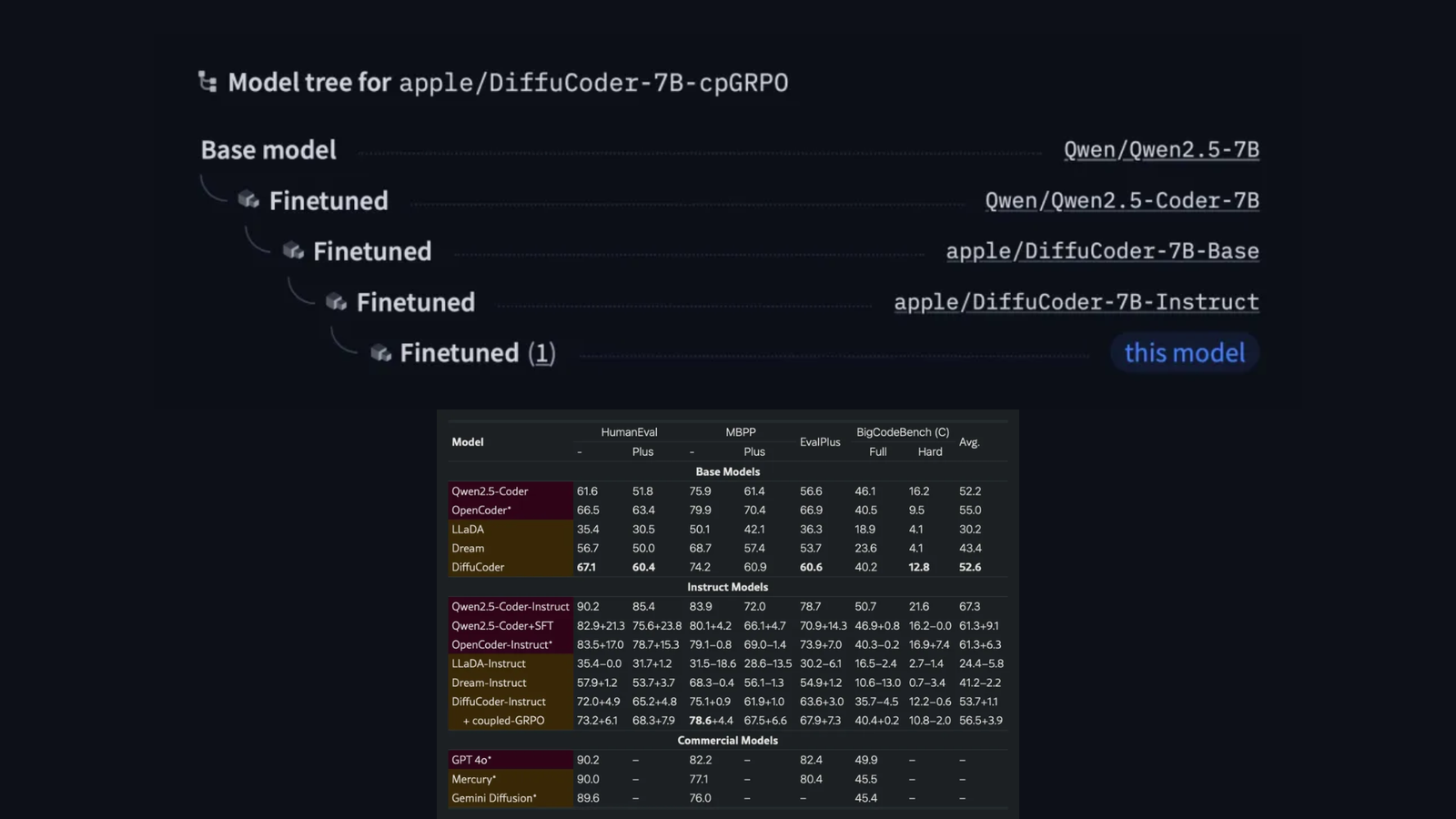Apple just quietly put out a new AI coding tool called DiffuCode-7B-cpGRPO on Hugging Face. This model is pretty cool because it can write code in a different way than usual, and it works just as well as other top coding AIs out there.
Apple AI Model
Here’s the thing – most AI models that write code do it the same way people read: left to right, top to bottom. That’s because these AI systems work by taking your question, figuring out the first word of the answer, then going back and reading your question plus that first word to figure out the second word, and they keep doing this over and over.
But Apple’s new model can actually write code out of order, which is pretty innovative and could make coding faster and more flexible.
LLM also has a setting called “Temperature” that controls the randomness of the output. After predicting the next token, the model assigns probabilities to all possible options.
A lower temperature means that the most likely token is more likely to be chosen, while a higher temperature gives the model more freedom to choose less likely tokens.
Another option is the Diffusion model, which is commonly used for image models. In short, the model starts with a blurry, noisy image and iteratively removes the noise while taking into account the user’s needs, gradually guiding it to an image closer to the user’s request.

The model released by Apple is called DiffuCode-7B-cpGRPO, and it is based on a paper published last month titled “DiffuCoder: Understanding and Improving Masked Diffusion Models for Code Generation.”
The paper describes a code generation model that adopts a diffusion-first strategy, but with one special feature: when the sampling temperature increases from the default 0.2 to 1.2, DiffuCoder becomes more flexible in the order of generating tokens, thus getting rid of the strict left-to-right constraint.
Built on top of an open-source LLM by Alibaba
More interestingly, Apple’s model is built on top of Qwen2.5‑7B, an open-source foundation model from Alibaba. Alibaba first fine-tuned that model for better code generation (as Qwen2.5‑Coder‑7B), then Apple took it and made its own adjustments.
They turned it into a new model with a diffusion-based decoder, as described in the DiffuCoder paper, and then adjusted it again to better follow instructions. Once that was done, they trained yet another version of it using more than 20,000 carefully picked coding examples.

In the mainstream programming benchmark, DiffuCode-7B-cpGRPO maintains the principle of not strictly relying on the left-to-right generation method when generating code, and its test score is improved by 4.4% compared with the mainstream diffusion-based programming model.










